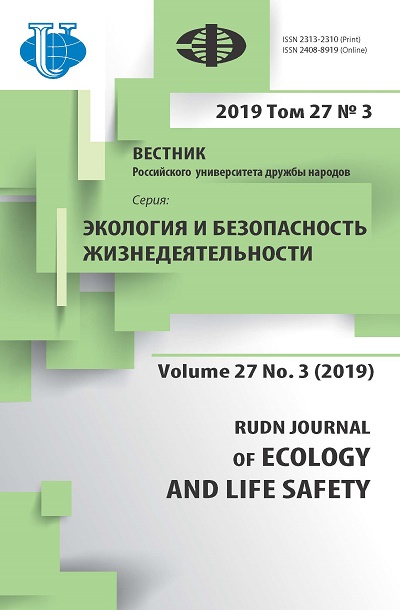The index of ornithological attractiveness of facilities for the processing and disposal of municipal solid waste
- Authors: Sergeev S.A.1, Kuznetsova I.N.2, Enaleev I.R.3
-
Affiliations:
- Branch of JSC “Waste Management” in Novocheboksarsk
- Union of Falconers of the North-West
- Union of Fans of Falconry and Conservation of Birds of Prey “Russian Falcon”
- Issue: Vol 27, No 3 (2019)
- Pages: 241-246
- Section: Short announcements
- URL: https://journals.rudn.ru/ecology/article/view/23913
- DOI: https://doi.org/10.22363/2313-2310-2019-27-3-241-246
Cite item
Full Text
Abstract
In connection with the increase in the number of household facilities attractting birds and the widespread growth of synanthropic bird populations, the problem of ornithological safety is becoming more and more urgent. For effective scaring away of birds from territories where their presence is undesirable, it is necessary to understand what has brought these birds to this territory, it’s important to find out the reasons for the ornithological attractiveness of the economic object. This article describes a method by which it’s possible to calculate the ornithological attractiveness of any business object. These calculations allow to plan the place, time and mode of work of bird repellent specialists.
Keywords
About the authors
Sergey A. Sergeev
Branch of JSC “Waste Management” in Novocheboksarsk
Author for correspondence.
Email: Sergeev605@yandex.ru
environmental engineer of branch of JSC “Waste Management” in Novocheboksarsk
16 Shorshelskii Thoroughfare, 429950, Novocheboksarsk, Chuvash Republic, Russian FederationIrina N. Kuznetsova
Union of Falconers of the North-West
Email: dir@nwfu.ru
President of the Association “Union of North-West Falconers”.
24 11th Line of V.O., Saint Petersburg, 199178, Russian FederationIldar R. Enaleev
Union of Fans of Falconry and Conservation of Birds of Prey “Russian Falcon”
Email: krechet.65@mail.ru
Doctor of Biological Sciences, member-correspondent of the Russian Academy of Natural Sciences, President of Union of Fans of Falconry and Conservation of Birds of Prey “Russian Falcon”.
10 Adelya Kutuya St, Kazan, 420073, Republic of Tatarstan, Russian FederationReferences
- Vladyshevskiy DV. Birds in the anthropogenic landscape. Novosibirsk, Nauka Publ.; 1975.
- Enaleev IR, Rakhimov II. The method of definition of the ornithological safety index of economic objects. Bulletin of Peoples’ Friendship University of Russia. 2012;(1):5–9.
















